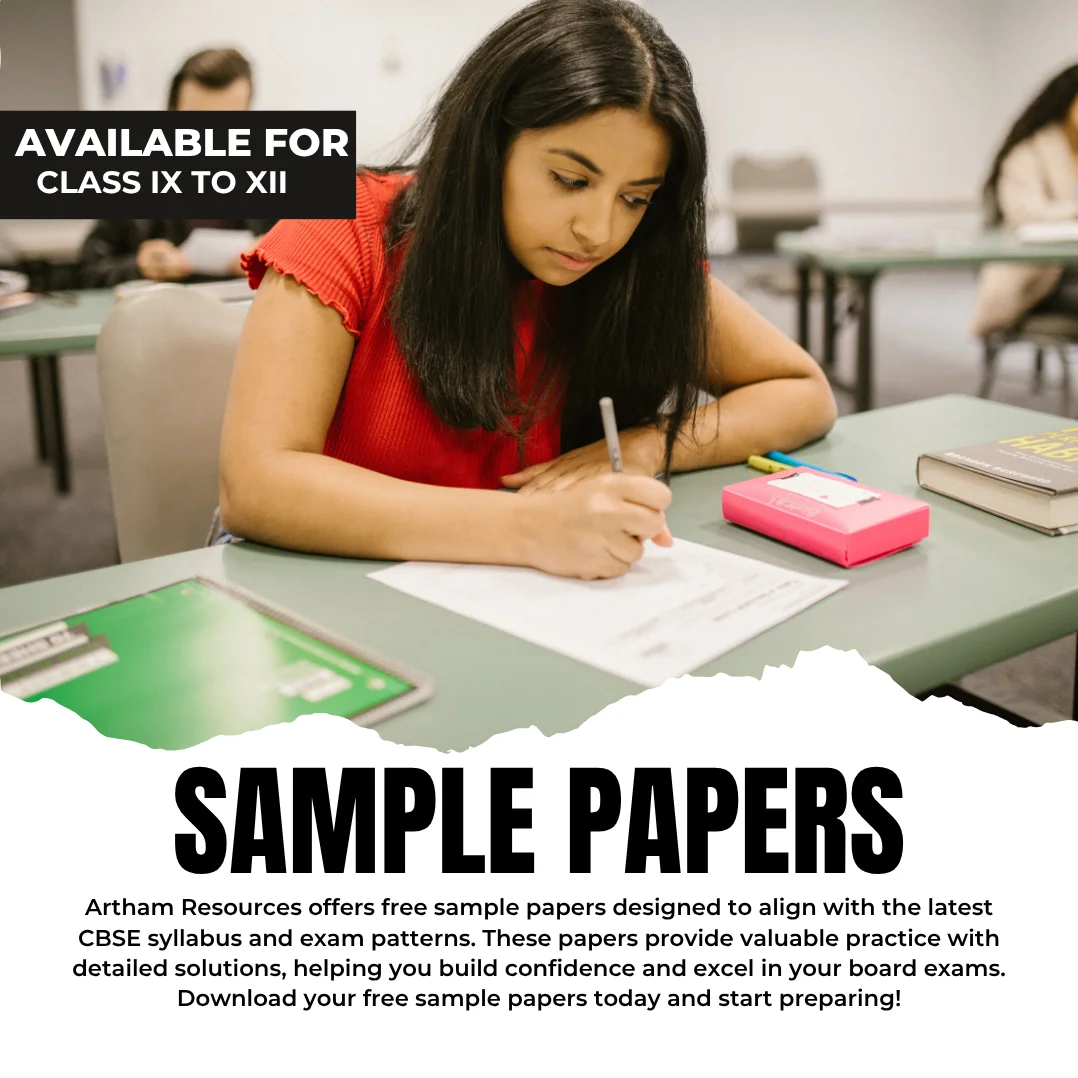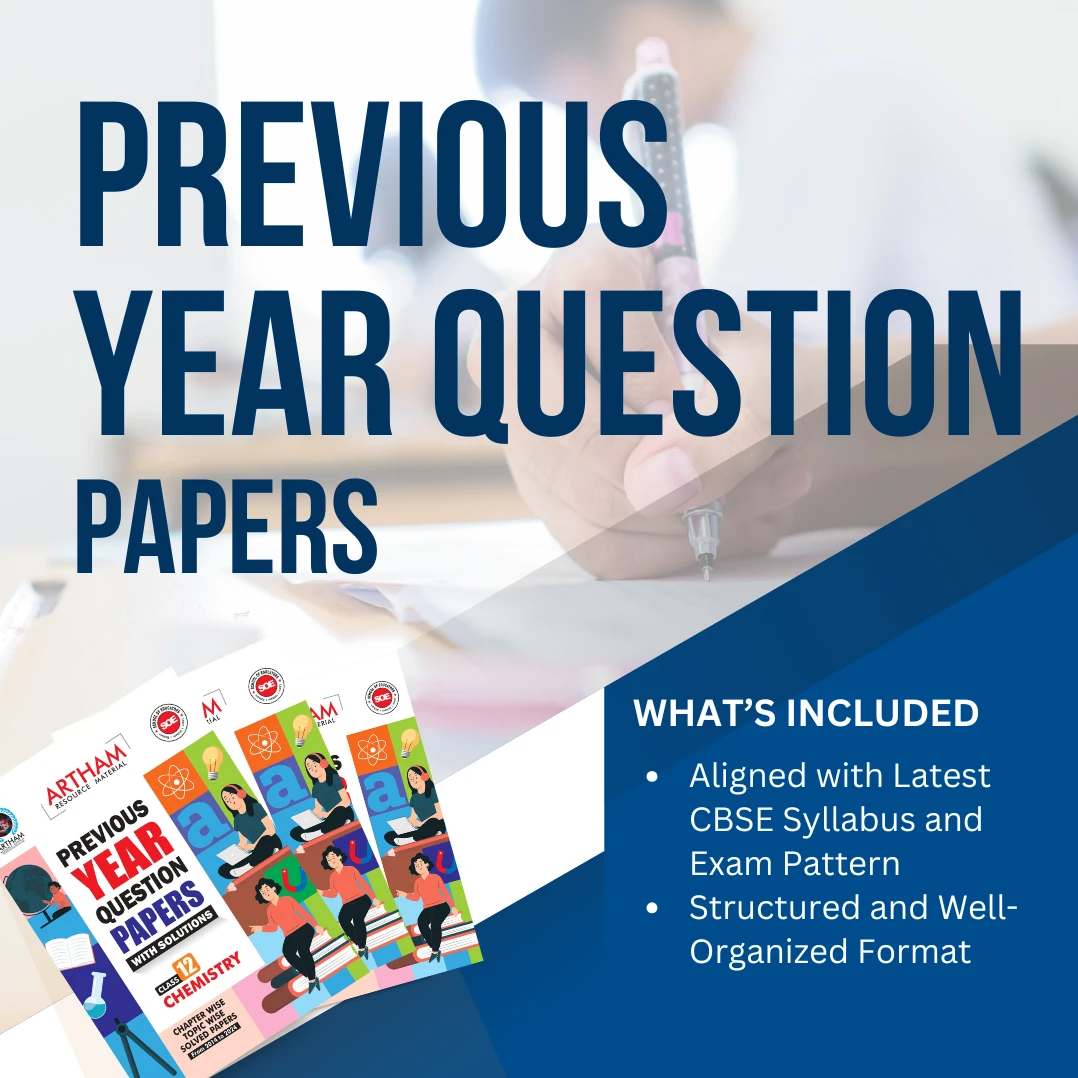Shop Left Sidebar
- CBSE
- Chapter Wise Topic Wise Notes
- Class 10
- Class 9
- Competency-Based Question Bank
- Competitive Exams & Aptitude Tests
- Comprehensive Viva Voice
- Courses
- CUET
- Daily Practice Paper (DPP)
- Diagnostic Assessment
- eBooks
- For New School
- Foundation and Olympiad Study Material
- Gift for Students
- Gift for Teachers
- Half Yearly Sample Question Paper with Solution
- Holiday Homework
- Illustrative Charts
- Journal
- Kindergarten
- Lesson Plan
- Life Skills
- Line by Line Questions
- Mind Maps
- Must Buy
- NCERT Exemplar Solutions
- NCERT Solutions
- Notes
- POWERPOINT PRESENTATIONS
- Pre Launch Stage
- Premium WhatsApp Group
- Previous Year Question Papers
- Previous Year Question Papers with Solutions
- Print version of SOP
- Sample Paper
- Sample Paper with Solutions
- Self Development
- Split -up Syllabus
- Sports and Physical Education
- Standard Operating Manuals
- Study Materials for Students
- Teachers Manual with Lesson Plans
Best seller
-
-100%
₹ 50.00Original price was: ₹ 50.00.₹ 0.00Current price is: ₹ 0.00. -
-100%
₹ 50.00Original price was: ₹ 50.00.₹ 0.00Current price is: ₹ 0.00. -
-100%
₹ 50.00Original price was: ₹ 50.00.₹ 0.00Current price is: ₹ 0.00. -
-100%
₹ 299.00Original price was: ₹ 299.00.₹ 0.00Current price is: ₹ 0.00.
- CBSE
- Chapter Wise Topic Wise Notes
- Class 10
- Class 9
- Competency-Based Question Bank
- Competitive Exams & Aptitude Tests
- Comprehensive Viva Voice
- Courses
- CUET
- Daily Practice Paper (DPP)
- Diagnostic Assessment
- eBooks
- For New School
- Foundation and Olympiad Study Material
- Gift for Students
- Gift for Teachers
- Half Yearly Sample Question Paper with Solution
- Holiday Homework
- Illustrative Charts
- Journal
- Kindergarten
- Lesson Plan
- Life Skills
- Line by Line Questions
- Mind Maps
- Must Buy
- NCERT Exemplar Solutions
- NCERT Solutions
- Notes
- POWERPOINT PRESENTATIONS
- Pre Launch Stage
- Premium WhatsApp Group
- Previous Year Question Papers
- Previous Year Question Papers with Solutions
- Print version of SOP
- Sample Paper
- Sample Paper with Solutions
- Self Development
- Split -up Syllabus
- Sports and Physical Education
- Standard Operating Manuals
- Study Materials for Students
- Teachers Manual with Lesson Plans
Showing 1–16 of 55 results
-
-62%
Lesson Plan Class 8 Social Science (History) Chapter 3 Ruling the Countryside
₹ 50.00Original price was: ₹ 50.00.₹ 19.00Current price is: ₹ 19.00.Explore the intricacies of colonial rule in rural India through “Ruling the Countryside,” Chapter 3 of Class 8 Social Science (History). This lesson plan delves into how the British administration governed India’s villages, impacting agriculture, land revenue systems, and the lives of peasants. Students will analyze the Permanent Settlement, Ryotwari System, and Mahalwari System, understanding their socio-economic effects and the resistance they provoked.
-
-62%
Lesson Plan Class 8 Social Science (Civics) Chapter 6 Confronting Marginalisation
₹ 50.00Original price was: ₹ 50.00.₹ 19.00Current price is: ₹ 19.00.This lesson plan for Class 8 Social Science (Civics) Chapter 6, “Confronting Marginalisation,” focuses on understanding the concept of marginalisation in society. Students will explore various forms of marginalisation such as caste, gender, and economic disparities, analyzing their impact on individuals and communities. The lesson encourages critical thinking through case studies and discussions on strategies for confronting marginalisation, promoting empathy and social justice awareness among students.
-
-62%
Lesson Plan Class 8 Social Science (Civics) Chapter 4 Judiciary
₹ 50.00Original price was: ₹ 50.00.₹ 19.00Current price is: ₹ 19.00.Explore the intricacies of the judicial system with this engaging lesson plan for Class 8 Social Science (Civics). Students will delve into Chapter 4: Judiciary, understanding the role and functions of the judiciary in upholding justice and interpreting laws. The lesson plan includes interactive activities to help students grasp the structure of courts, the significance of the rule of law, and the principles of justice.
-
-62%
Lesson Plan Class 8 Social Science (Civics) Chapter 3 Parliament and the Making of Laws
₹ 50.00Original price was: ₹ 50.00.₹ 19.00Current price is: ₹ 19.00.This lesson plan for Class 8 Social Science (Civics), focusing on Chapter 3: Parliament and the Making of Laws, aims to provide students with a comprehensive understanding of the legislative process in India. Through interactive activities, discussions, and visual aids, students will explore the roles and functions of the Parliament, understanding its composition, powers, and the significance of lawmaking in a democratic setup.
-
-62%
Lesson Plan Class 8 Social Science (History) Chapter 4 Tribals, Dikus and the Vision of a Golden Age
₹ 50.00Original price was: ₹ 50.00.₹ 19.00Current price is: ₹ 19.00.This lesson plan for Class 8 Social Science (History) focuses on Chapter 4: Tribals, Dikus and the Vision of a Golden Age. Students will delve into the historical interactions between tribal communities and outsiders during colonial times, exploring themes of cultural identity, resistance, and adaptation.
-
-62%
Lesson Plan Class 8 Social Science (History) Chapter 2 From Trade to Territory The Company Establishes Power
₹ 50.00Original price was: ₹ 50.00.₹ 19.00Current price is: ₹ 19.00.This lesson plan for Class 8 Social Science focuses on Chapter 2: “From Trade to Territory: The Company Establishes Power.” The chapter delves into the historical context of how the East India Company transformed from a trading entity to a political power in India. Students will explore the early interactions of Europeans in India, the establishment of trading posts, and the gradual expansion of British influence through treaties and conquests.
-
-62%
Lesson Plan Class 8 Social Science (Geography) Chapter 5 Human Resources
₹ 50.00Original price was: ₹ 50.00.₹ 19.00Current price is: ₹ 19.00.This lesson plan for Class 8 Social Science (Geography) focuses on Chapter 5: Human Resources. Students will explore the concept of human resources, emphasizing its significance in economic and social contexts. The lesson aims to deepen their understanding of population distribution, density, and factors influencing migration patterns. Through interactive activities and discussions, learners will analyze case studies to comprehend the impact of human resources on regional development and global economies.
-
-62%
Lesson Plan Class 8 Social Science (Geography) Chapter 3 Agriculture
₹ 50.00Original price was: ₹ 50.00.₹ 19.00Current price is: ₹ 19.00.This lesson plan for Class 8 Social Science focuses on Chapter 3: Agriculture, exploring the fundamental aspects of agricultural practices worldwide. Students will delve into topics such as types of farming, agricultural techniques, agricultural regions, and the significance of agriculture in economies. The lesson encourages interactive learning through discussions on challenges faced by farmers, sustainable practices, and the role of technology in modern agriculture.
-
-62%
Lesson Plan Class 8 Social Science (Civics) Chapter 7 Public Facilities
₹ 50.00Original price was: ₹ 50.00.₹ 19.00Current price is: ₹ 19.00.This lesson plan for Class 8 Social Science (Civics) Chapter 7 on Public Facilities aims to engage students in understanding the significance of public amenities in society. The lesson covers topics such as the importance of clean water, sanitation, healthcare, and education as essential public facilities.
-
-62%
Lesson Plan Class 8 Science Chapter 11 Chemical Effects of Electric Current
₹ 50.00Original price was: ₹ 50.00.₹ 19.00Current price is: ₹ 19.00.This lesson plan for Class 8 Science, Chapter 11 (“Chemical Effects of Electric Current”), aims to engage students in understanding how electricity can cause chemical changes. The lesson begins with a brief introduction to electric current and its basic concepts. Students then explore electrolysis, learning about the decomposition of substances through the application of electric current.
-
-62%
Lesson Plan Class 8 English Chapter 1 The Best Christmas Present in the World
₹ 50.00Original price was: ₹ 50.00.₹ 19.00Current price is: ₹ 19.00.This lesson plan for Class 8 English, focusing on Chapter 1 “The Best Christmas Present in the World,” immerses students in a heartwarming narrative that explores themes of compassion, history, and the human spirit. The lesson begins with an introduction to the author and historical context, followed by a deep dive into comprehension and analysis of the text’s characters, setting, and plot. Activities include interactive reading sessions, group discussions on moral lessons, and creative exercises such as writing letters from characters’ perspectives.
-
-62%
Lesson Plan Class 8 Social Science (History) Chapter 8 The Making of the National Movement: 1870s-–1947
₹ 50.00Original price was: ₹ 50.00.₹ 19.00Current price is: ₹ 19.00.This lesson plan for Class 8 Social Science focuses on Chapter 8, “The Making of the National Movement: 1870s-1947,” which explores the significant events and personalities that shaped India’s struggle for independence. It covers topics such as the formation of the Indian National Congress, the partition of Bengal, the rise of leaders like Mahatma Gandhi, and key movements including Non-Cooperation and Civil Disobedience.
-
-62%
Lesson Plan Class 8 Social Science (History) Chapter 7 Women, Caste and Reform
₹ 50.00Original price was: ₹ 50.00.₹ 19.00Current price is: ₹ 19.00.This lesson plan focuses on Chapter 7 of Class 8 Social Science, covering the theme of “Women, Caste and Reform” in Indian history. The objective is to explore the social reforms initiated during the 19th century in India, highlighting the roles of prominent reformers like Raja Ram Mohan Roy and Jyotirao Phule. Students will delve into the challenges faced by women and marginalized caste groups, examining their struggles and contributions to societal change.
-
-62%
Lesson Plan Class 8 Social Science (History) Chapter 6 Civilising the “Native”, Educating the Nation
₹ 50.00Original price was: ₹ 50.00.₹ 19.00Current price is: ₹ 19.00.This lesson plan focuses on Chapter 6 of Class 8 Social Science (History), titled “Civilising the ‘Native’, Educating the Nation”. It explores how colonial powers used education as a tool to influence and control native populations during the 19th and early 20th centuries. Students will examine the motives behind the establishment of educational systems by European powers in their colonies, the impact of Western education on indigenous cultures and societies, and the responses of native populations to these educational initiatives.
-
-62%
Lesson Plan Class 8 Social Science (History) Chapter 5 When People Revolt 1857 and After
₹ 50.00Original price was: ₹ 50.00.₹ 19.00Current price is: ₹ 19.00.This lesson plan for Class 8 Social Science (History), focusing on Chapter 5 “When People Revolt 1857 and After,” aims to explore the significant events and aftermath of the Indian Rebellion of 1857. Students will delve into the causes, key figures, and consequences of this pivotal uprising against British rule in India. The plan incorporates interactive discussions, visual aids, and role-playing activities to deepen understanding of historical contexts, such as the Sepoy Mutiny, socio-economic factors, and the impact on India’s nationalist movement.
-
-62%
Lesson Plan Class 8 Social Science (History) Chapter 1 Introduction: How, When and Where
₹ 50.00Original price was: ₹ 50.00.₹ 19.00Current price is: ₹ 19.00.Explore the vibrant tapestry of Indian history with this engaging lesson plan for Class 8 Social Science. Focusing on Chapter 1: Introduction – How, When and Where, students delve into the historical methods of dating events, understanding the geographical context of ancient civilizations, and tracing the evolution of early societies.
Teaching is one of the hardest and most important jobs in the world. We provide the support that teachers need to transform their subjects into terms that their students will understand.
- Nageen International
- B-162, 4th Floor, DDA Shed, Okhla Industrial Area Phase 1 New Delhi-110020 (India)
- WhatsApp us at +91-95208-11111
- Email: info@educatorsresource.in
- (Monday to Saturday) WhatsApp 24*7
2025 Educator Resources. All Rights Reserved.




